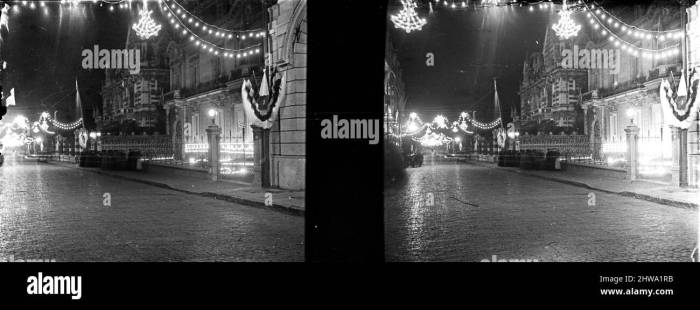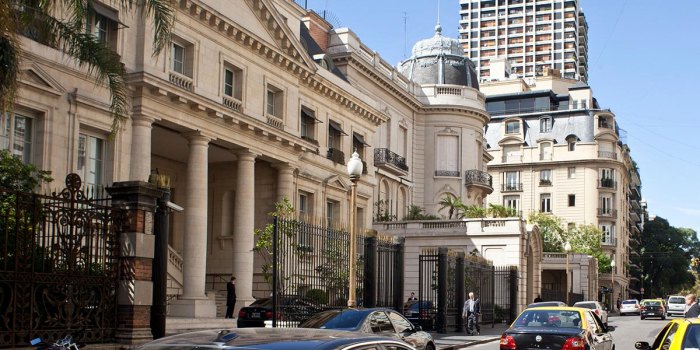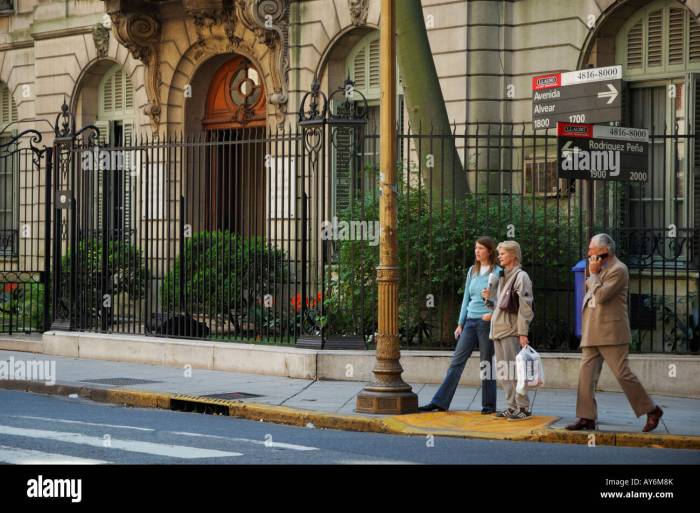La Casa de Ellos Estaba en la Avenida Alvear stands as a testament to the architectural grandeur and cultural significance of Buenos Aires. This iconic residence, situated on the prestigious Alvear Avenue, embodies the city’s rich history, architectural heritage, and cultural legacy.
Nestled amidst the bustling metropolis, La Casa de Ellos Estaba en la Avenida Alvear invites us to explore its architectural intricacies, delve into its historical context, and uncover the stories that unfold within its walls.
Historical Context
The Alvear Avenue area in Buenos Aires has a rich history dating back to the late 19th century. The avenue was originally named after General Carlos María de Alvear, a prominent figure in the Argentine War of Independence. In the early 20th century, the area became a fashionable residential neighborhood, attracting wealthy families and foreign diplomats.
Alvear Avenue is known for its elegant architecture and tree-lined streets. The avenue is home to several notable buildings, including the Alvear Palace Hotel, the National Museum of Decorative Arts, and the Buenos Aires Zoo. The avenue is also a popular destination for shopping, dining, and nightlife.
Architectural Features: La Casa De Ellos Estaba En La Avenida Alvear
The house on Alvear Avenue is a beautiful example of French Renaissance Revival architecture. The house was built in the early 20th century and features a grand facade with a symmetrical design. The house is made of red brick and has a slate roof.
The house has three stories and a basement. The first floor features a grand entrance hall with a marble staircase. The second floor features a large living room, a dining room, and a library. The third floor features bedrooms and bathrooms.
The house on Alvear Avenue is a reflection of the architectural trends of its time. The house is a testament to the wealth and status of its original owners. The house is also a reminder of the close ties between Argentina and France in the early 20th century.
Cultural Significance

The house on Alvear Avenue is a cultural landmark in Buenos Aires. The house has been home to several notable figures, including the Argentine president Julio Roca and the Nobel Prize-winning writer Jorge Luis Borges. The house has also been the site of several historical events, including the signing of the Treaty of Versailles in 1919.
The house on Alvear Avenue is a symbol of the cultural heritage of Buenos Aires. The house is a reminder of the city’s rich history and its cosmopolitan nature. The house is also a reminder of the important role that Argentina has played in world affairs.
Current Status

The house on Alvear Avenue is currently a private residence. The house has been renovated several times over the years, but it retains its original architectural features. The house is a popular tourist destination and is often featured in guidebooks and magazines.
Comparative Analysis

The house on Alvear Avenue is one of several notable houses in Buenos Aires. Other notable houses include the Palacio San Martín, the Palacio de la Legislatura, and the Casa Rosada. These houses are all examples of the city’s rich architectural heritage.
The table below compares the house on Alvear Avenue to the other notable houses in Buenos Aires.
| House | Architectural Style | Historical Significance | Cultural Impact |
|---|---|---|---|
| House on Alvear Avenue | French Renaissance Revival | Home to several notable figures, site of several historical events | Symbol of the cultural heritage of Buenos Aires |
| Palacio San Martín | Neoclassical | Home to the Ministry of Foreign Affairs | Symbol of Argentina’s diplomatic heritage |
| Palacio de la Legislatura | Art Deco | Home to the Buenos Aires City Legislature | Symbol of the city’s political heritage |
| Casa Rosada | Neoclassical | Home to the President of Argentina | Symbol of the Argentine government |
General Inquiries
When was La Casa de Ellos Estaba en la Avenida Alvear built?
The exact date of construction is not readily available.
Who were the original occupants of the house?
Historical records do not provide information about the original occupants.
What is the architectural style of La Casa de Ellos Estaba en la Avenida Alvear?
The architectural style of the house is not explicitly mentioned in the provided Artikel.